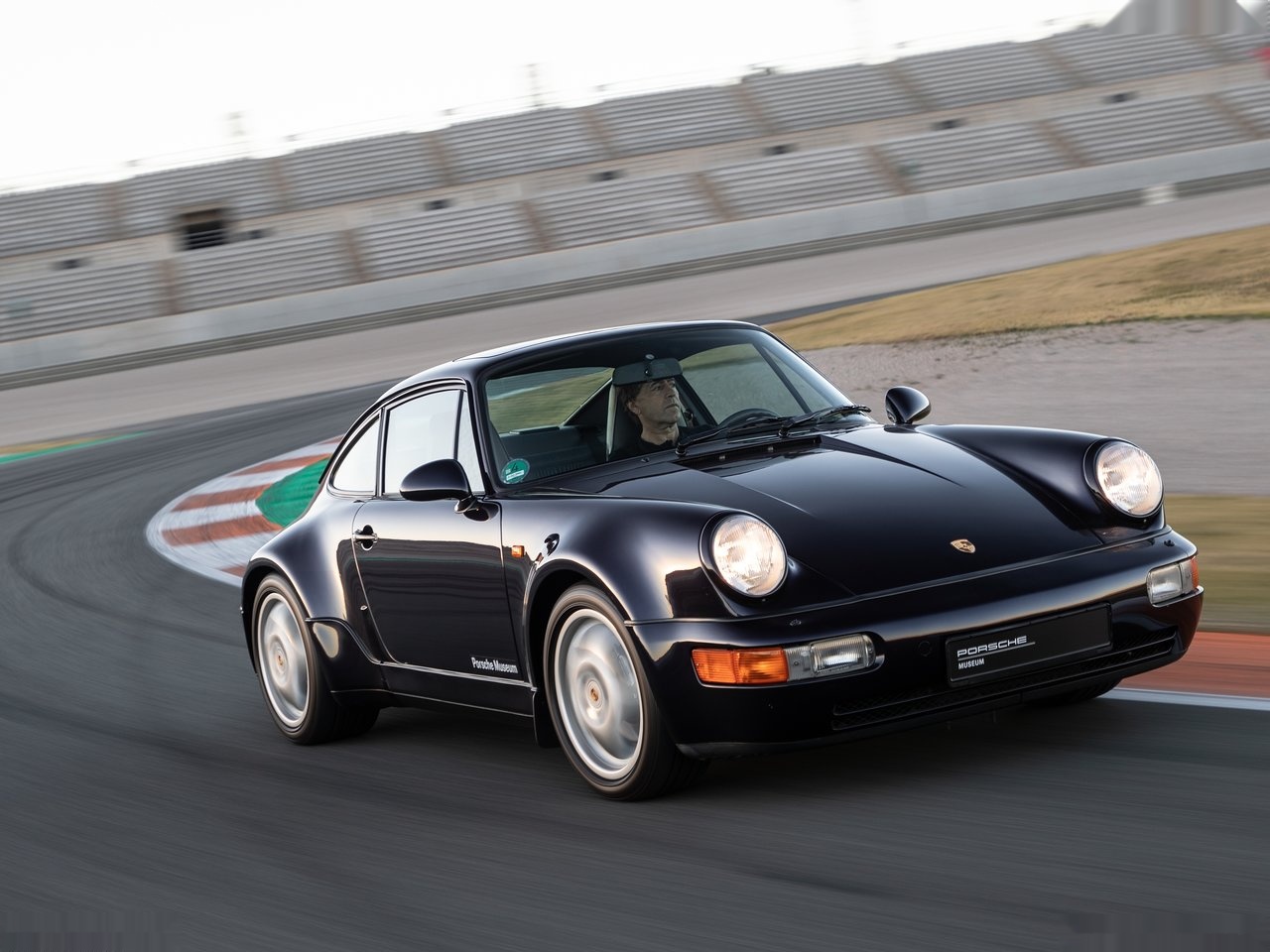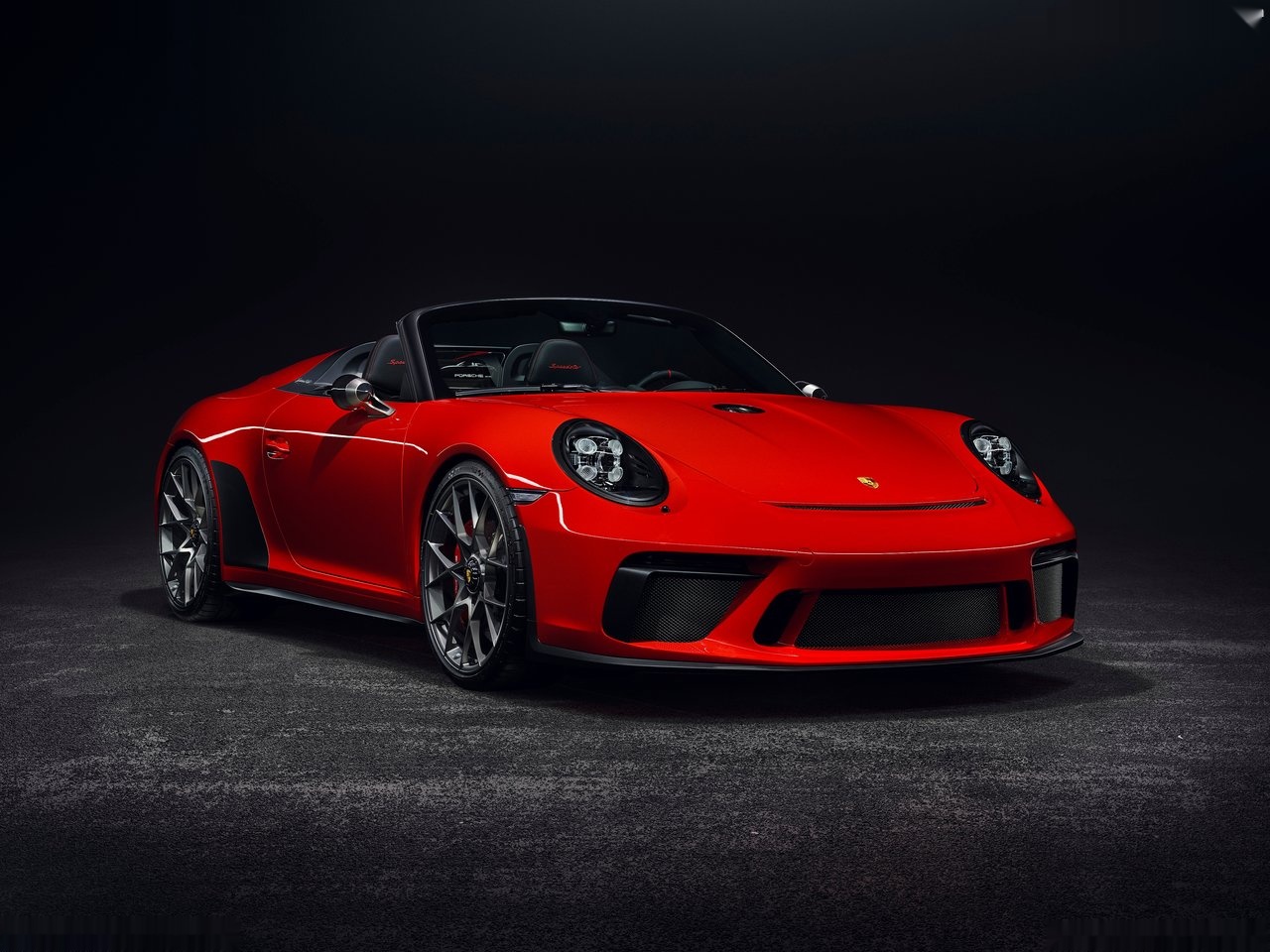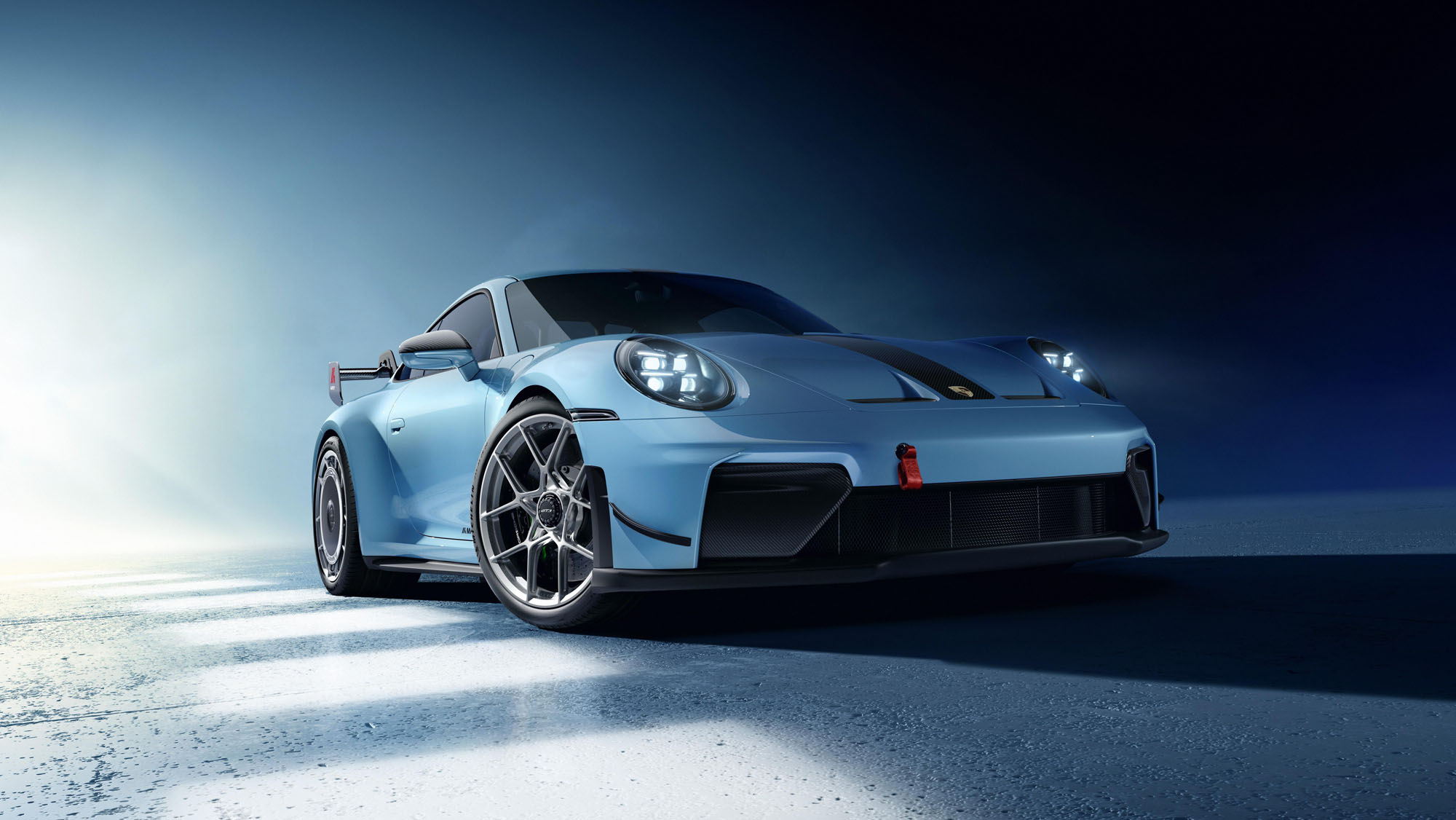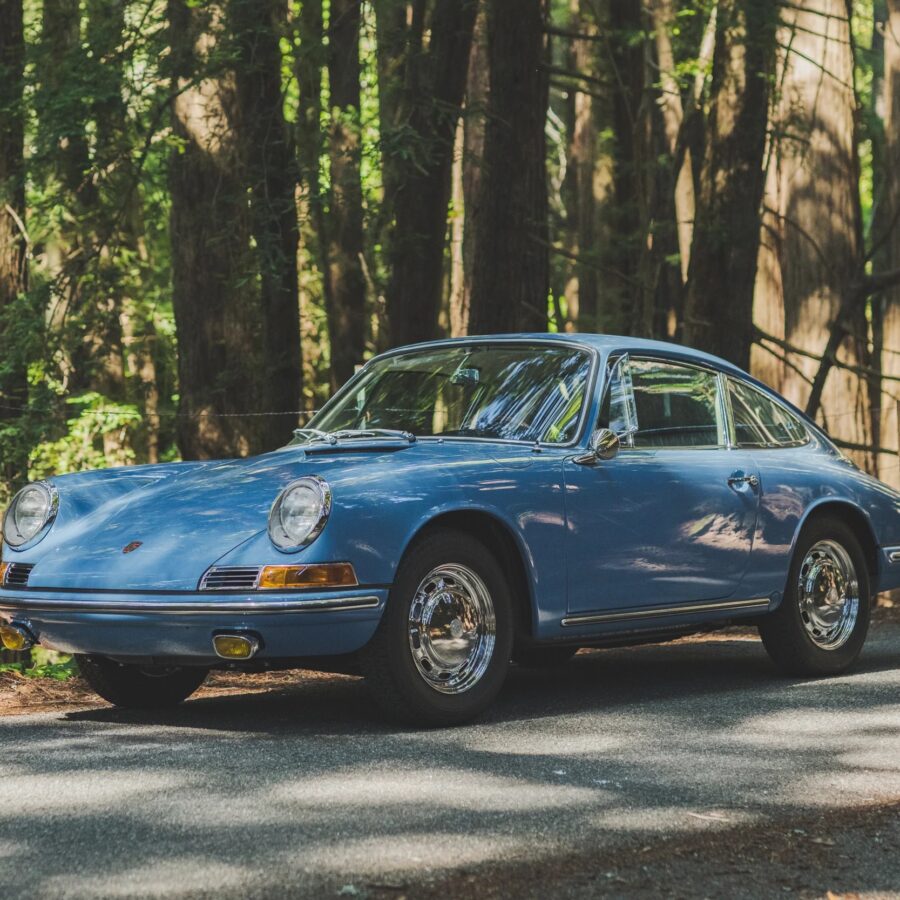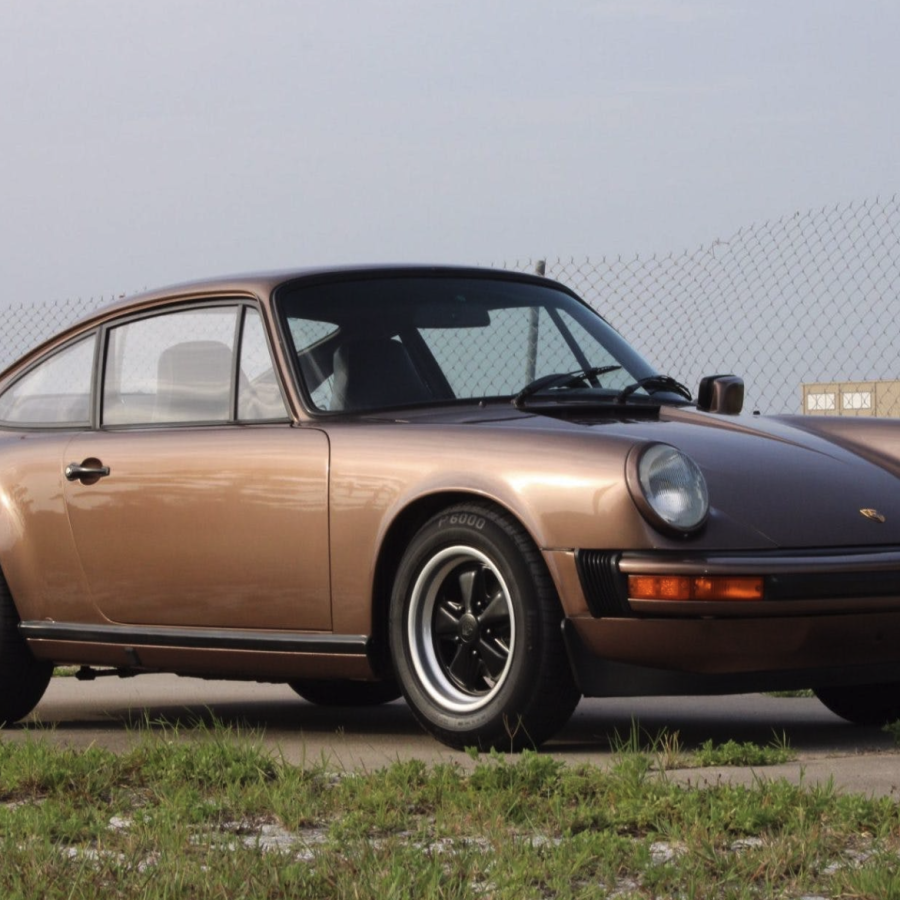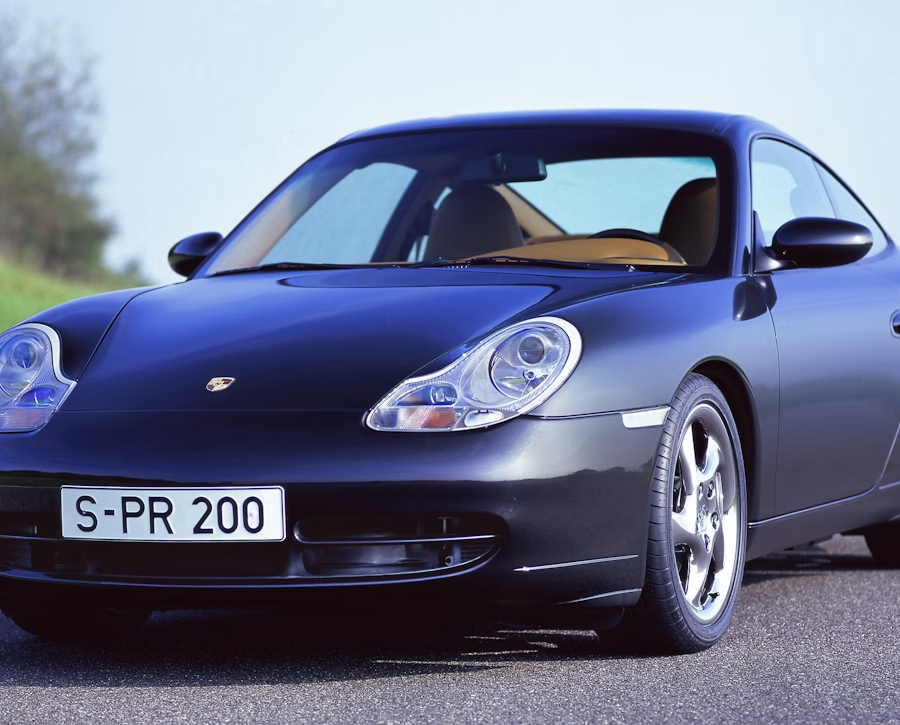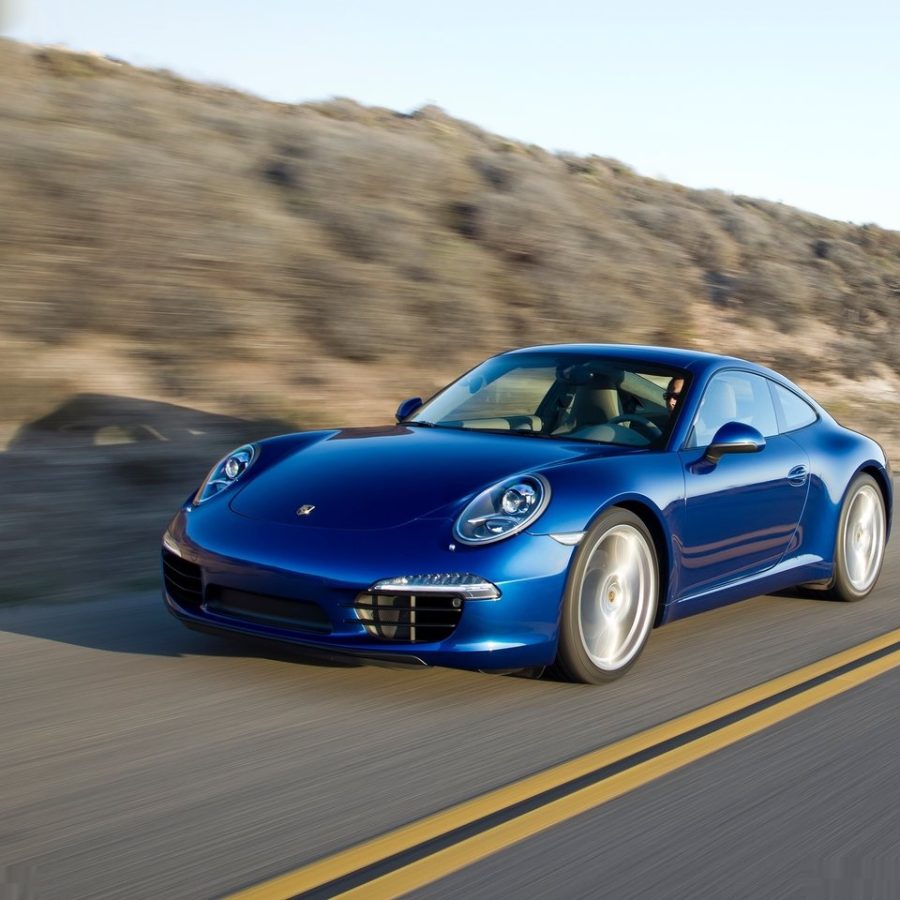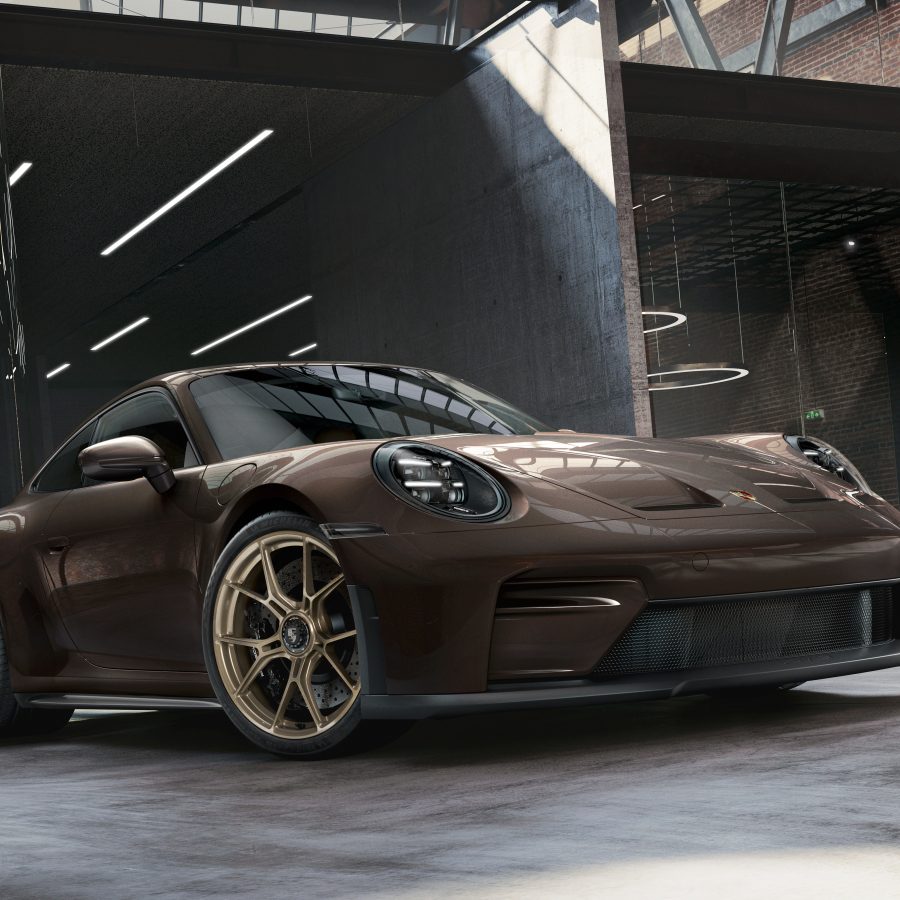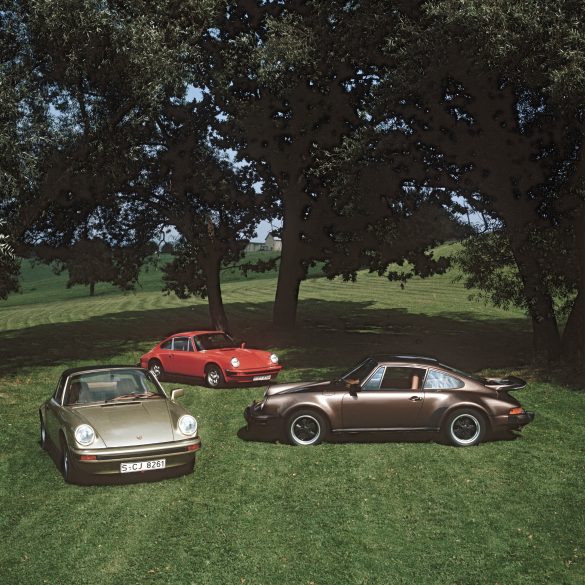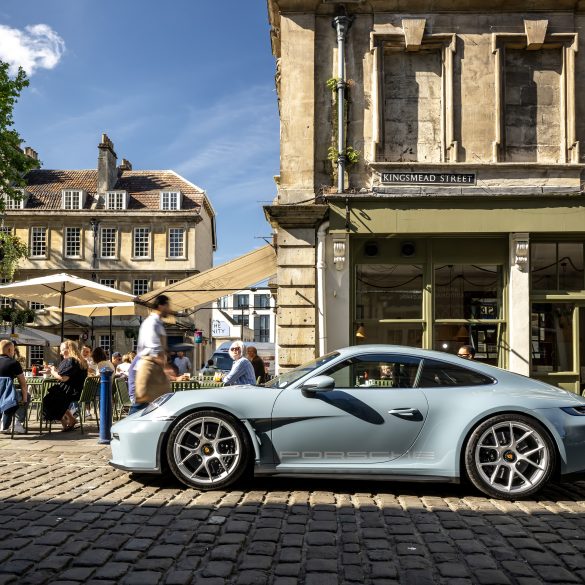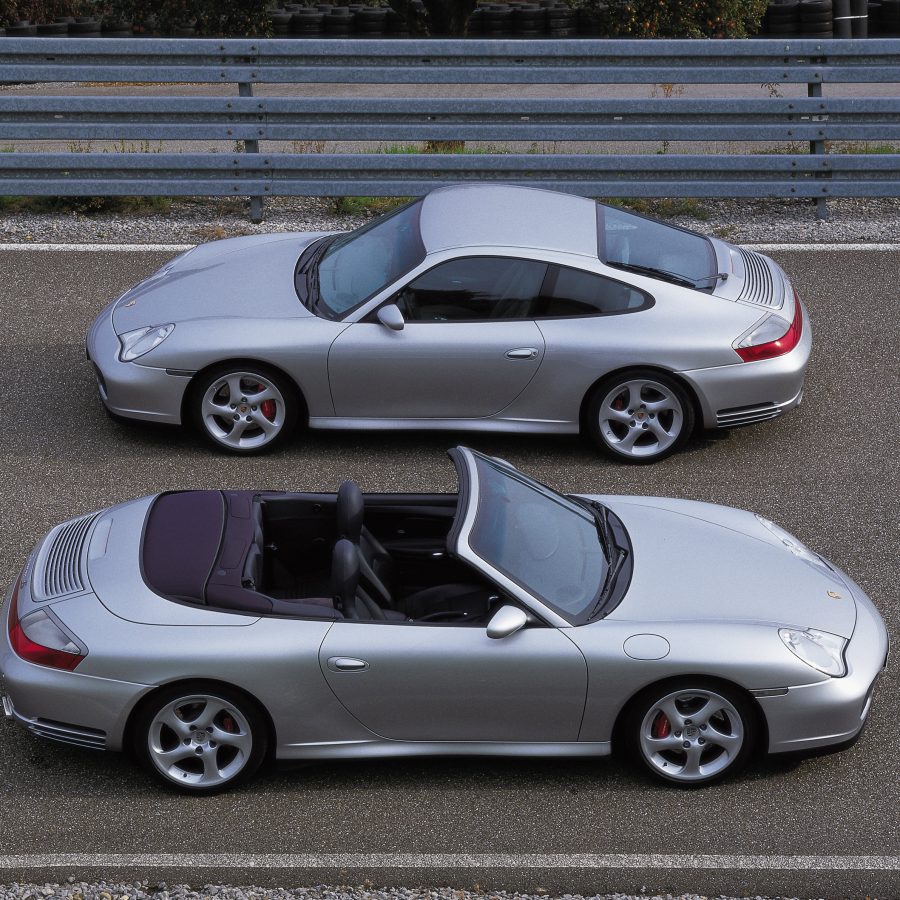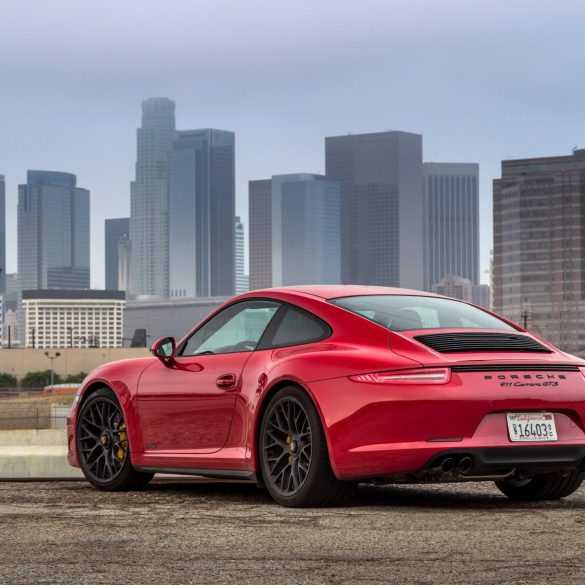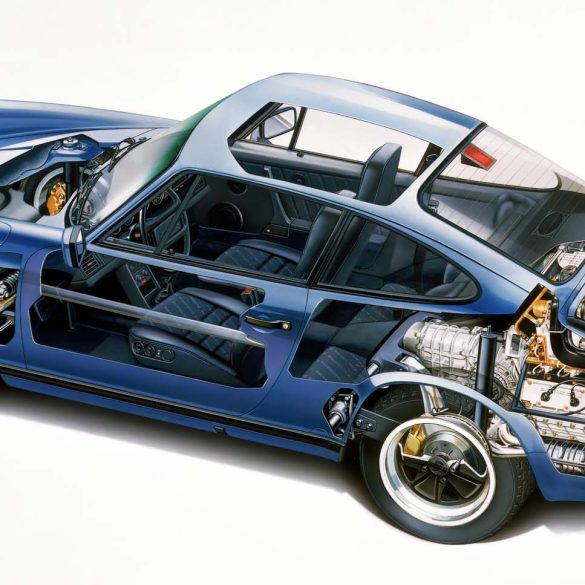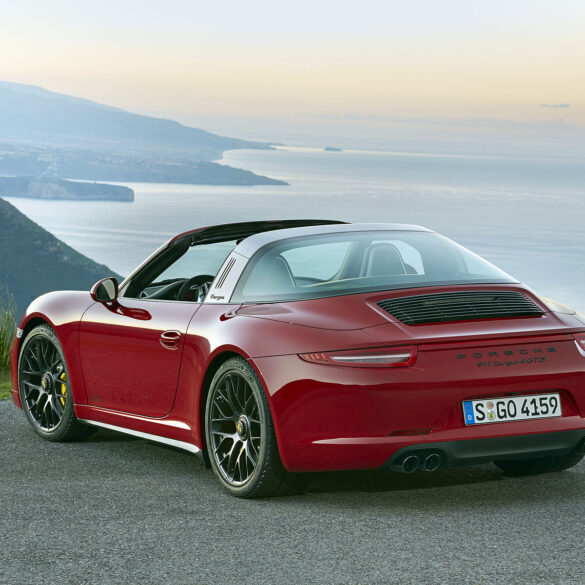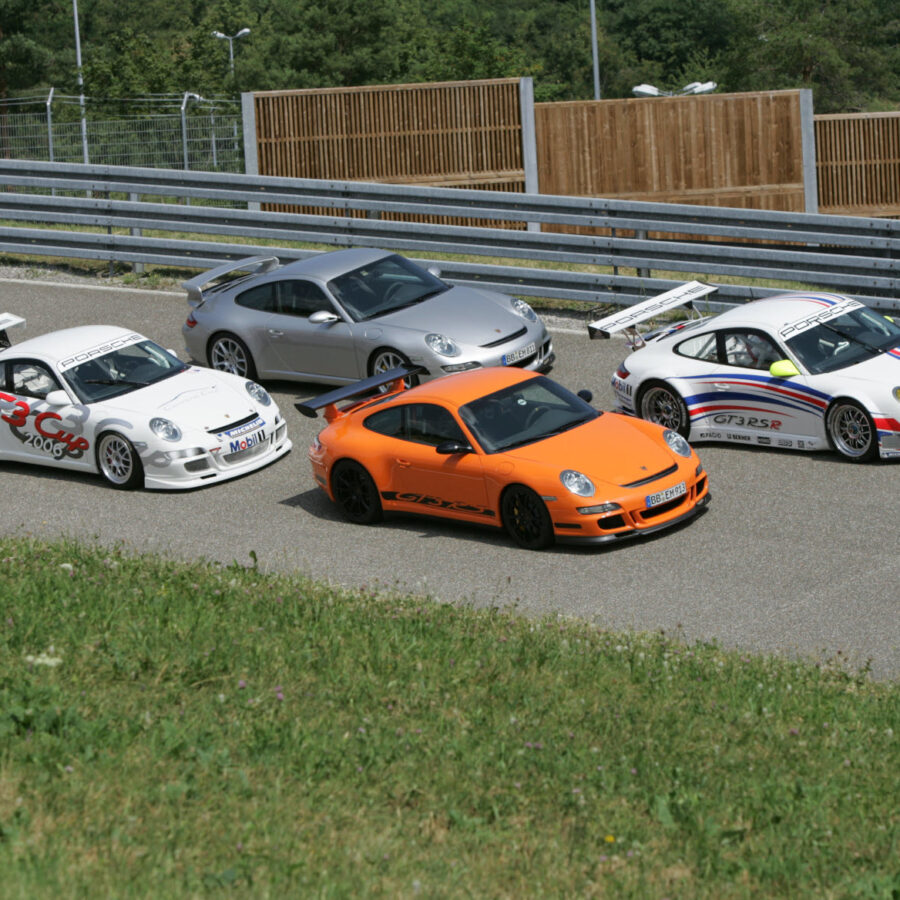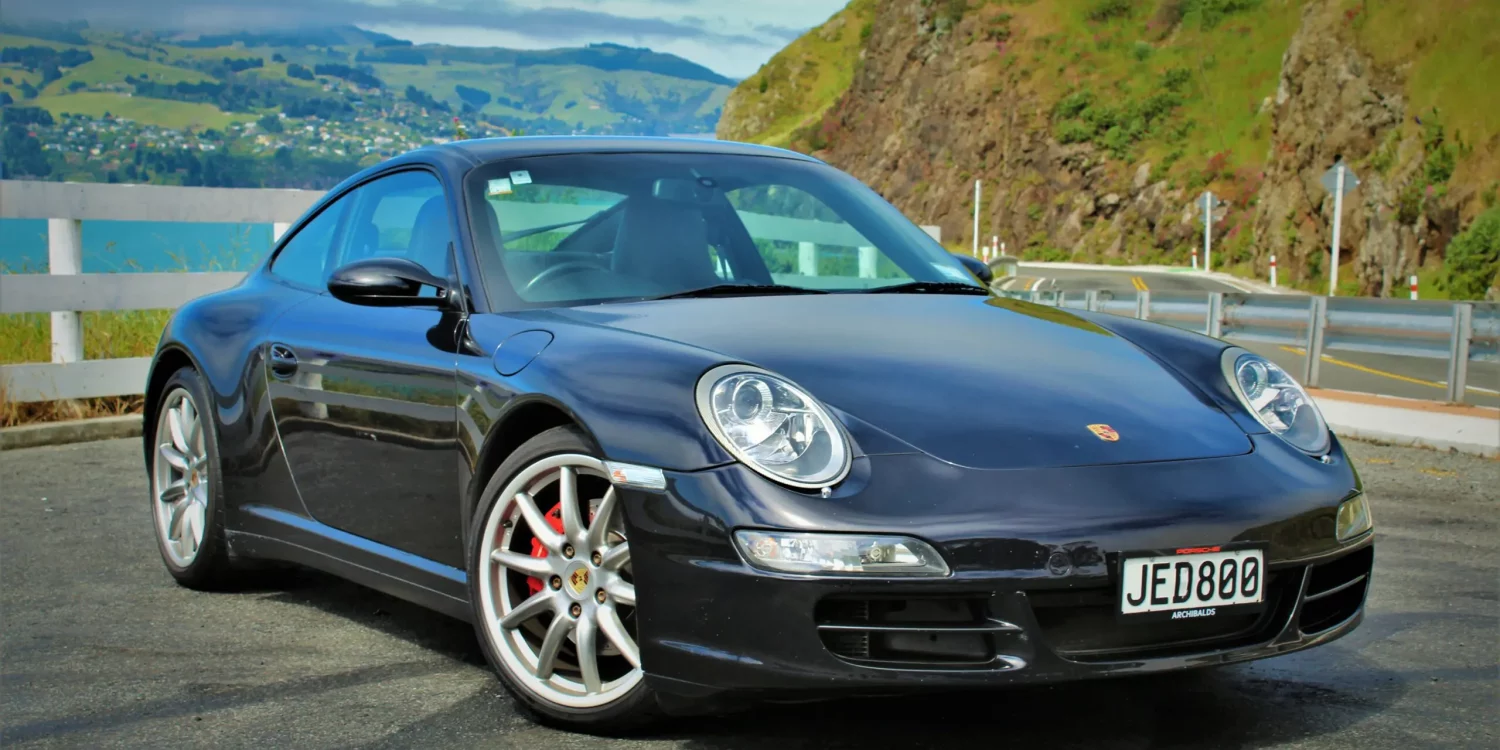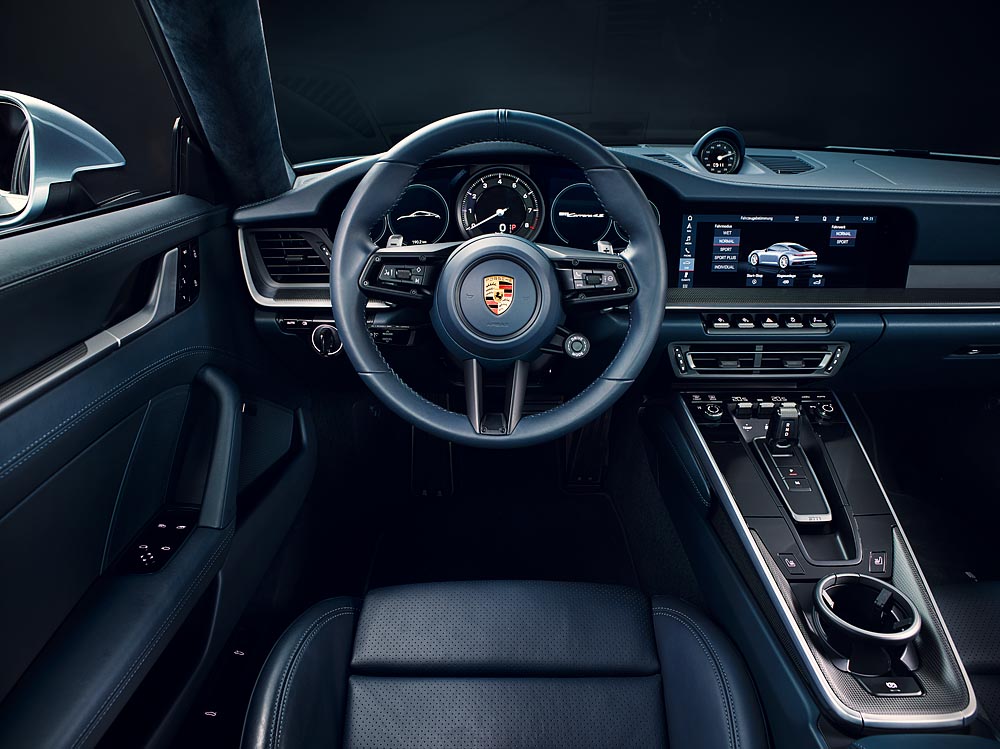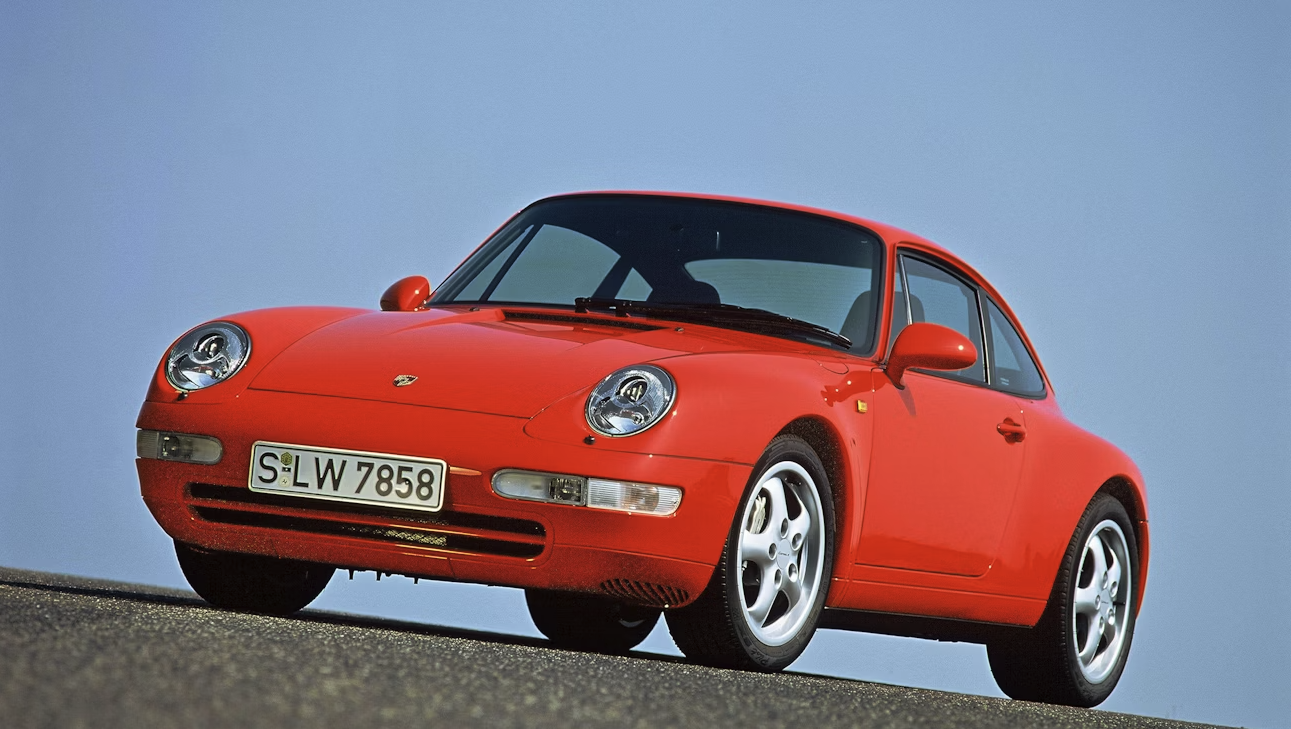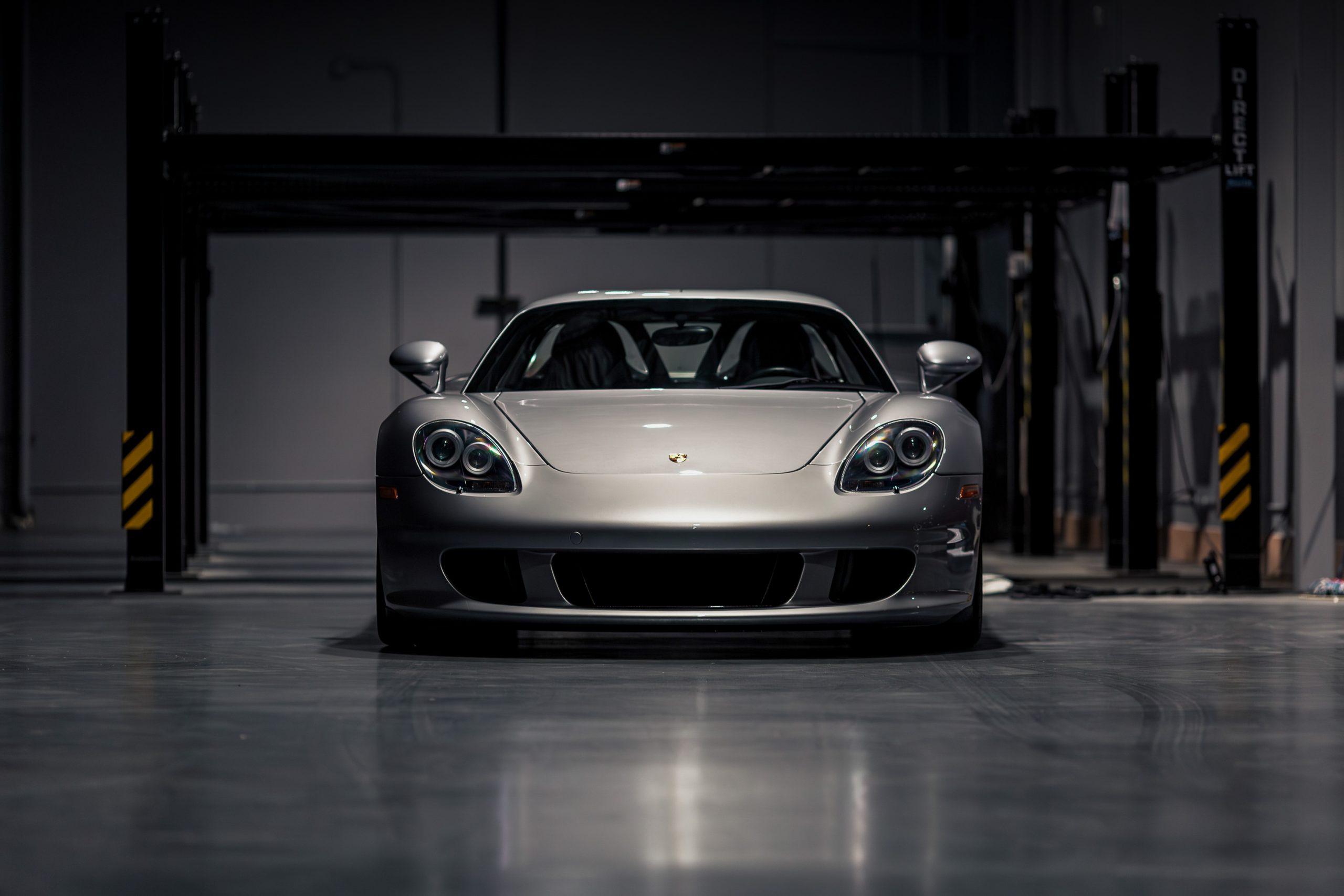Porsche 911 Buyer's Guide
Buying a 911? Our Guide Covers Key Generations, Models, Potential Issues, Values, Tips & More.
The Porsche 911 is one of the most iconic sports cars ever created — a machine defined by its unmistakable silhouette, rear-engine layout, and decades of continuous evolution. Yet for buyers, that rich history can also make the 911 one of the most complex sports cars to navigate. With multiple generations, countless variants, and wide price differences, choosing the right 911 requires more than passion — it requires informed guidance. That’s exactly what this Porsche 911 Buyer’s Guide delivers.
In this guide, we break down the fundamentals of 911 ownership, introduce each generation in a clear and structured way, and explain what makes them unique in terms of driving experience, reliability, performance, and character. From classic air-cooled models to modern turbocharged icons, we’ll help you understand how each era differs and what type of owner it best suits.
Beyond generational overviews, we’ll walk you through the practical side of buying. You’ll learn what to look for when inspecting a used 911, how to evaluate condition and documentation, which options truly matter, and how to identify whether a specific car represents good value. Whether you’re buying your first 911 or adding another to your collection, this guide is designed to help you navigate the process with confidence, clarity, and genuine expertise.

Why the Porsche 911 Is A Sports Car Buyers Dream Irrespective of Generation
Few cars in automotive history have achieved the universal respect, emotional pull, and enduring desirability of the Porsche 911. Whether it’s a classic air-cooled icon or the latest high-tech masterpiece, the 911 consistently delivers an experience that blends performance, heritage, and everyday usability in a way no other sports car can quite replicate. Irrespective of generation, the 911 isn’t just a car — it is a benchmark, a lineage, and a lifelong aspiration for countless enthusiasts.
At the heart of its magic is a design philosophy that has evolved without abandoning its roots. The unmistakable silhouette, rear-engine layout, and driving character create a connection across decades, making each iteration feel like part of a larger story rather than a disconnected model cycle. While technology and performance have advanced dramatically, the core identity remains intact: surgical steering, a communicative chassis, and an engine that feels alive behind you. This continuity ensures that whether you’re driving an early air-cooled model or a modern 992, you still feel unmistakably connected to Porsche’s motorsport heritage.
What truly elevates the 911 beyond most sports cars is its rare ability to satisfy multiple roles at once. It can be a weekend thrill machine, a comfortable grand tourer, a daily driver, and even a track weapon — sometimes all in the same day. Very few sports cars offer such a wide performance envelope while maintaining refinement, reliability, and usability. That versatility is part of why 911 ownership feels aspirational yet achievable, emotional yet rational.
Perhaps most importantly, the 911 delivers consistency of joy. Every generation refines performance, improves handling, and enhances quality, but the sense of purpose and driver engagement remains timeless. It invites mastery, rewards commitment, and builds a bond between car and owner that deepens over years — not fades. That rare longevity of emotional value is what transforms the 911 from a mere sports car into a lifelong centerpiece of automotive passion.
Ultimately, the Porsche 911 is a sports car buyer’s dream because it offers something few others can: heritage, performance, identity, and emotional connection wrapped into one enduring form. No matter the generation, it represents the purest realization of what a true sports car can be — aspirational yet authentic, complex yet endlessly rewarding.
911 Generations - A Quick Primer for Potential Buyers
Which 911 Generation Is Right for You?
We've already covered the Porsche 911 generations in-depth elsewhere so we won't redo it here. Instead, we are going to give you a quick review of each generation from a buyers perspective to help you navigate which generation might be a good fit for your budget, goals and expectations of an ownership perspective. Once you narrow down the generation make sure to review the in-depth buyer's guides for that generation, where we go super deep. In all, there are eight generations of 911 so far and every generation has its own quirks, strengths, weaknesses and things that make them special.
Porsche 911 (F-Series) (1965-1973)
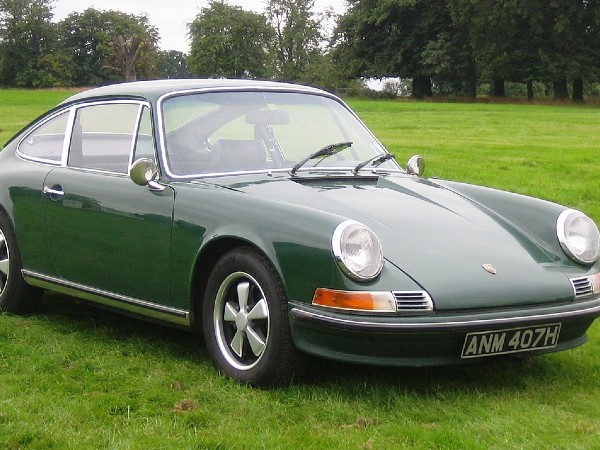
Pros
Ultimate “classic 911” aesthetic with long-hood design
Pure analog driving feel and mechanical connection
Strong collector appeal and long-term value potential
Lightweight, engaging, and historically important
Iconic heritage and motorsport pedigree
Cons
Requires specialist knowledge and maintenance
Less refined and less safe than modern 911s
Restoration quality varies widely and impacts value
Parts and service can be expensive
Not ideal as a daily or casual-use car
Perfect For
Buyers seeking an authentic, historically significant Porsche 911 experience — who value heritage, mechanical purity, and long-term collectability over modern comfort, convenience, and outright performance.
Porsche 911 F-Series (1964–1973) – Buyer-Focused Summary
The Porsche 911 F-Series represents the original foundation of the 911 legend and remains one of the purest expressions of the model’s core identity.
Lightweight, mechanically simple, and unmistakably analog, these early long-hood 911s offer an experience centered entirely on feel, feedback, and connection.
For buyers comparing different 911 generations, the F-Series sits at the extreme end of the spectrum: raw, engaging, and historically significant, but also far less forgiving and far more demanding than later cars. It delivers steering purity, mechanical honesty, and a sense of occasion that newer 911s cannot replicate — but it comes with ownership responsibilities that must be taken seriously.
From a buyer’s perspective, the F-Series is less about performance numbers and more about provenance, condition, and authenticity.
These cars are now firmly entrenched in collector territory, meaning purchase decisions should be guided as much by documentation, originality, and restoration quality as by driving dynamics.
While examples vary significantly in price and quality, a properly sorted F-Series offers timeless styling, classic Porsche character, and strong long-term desirability. However, it is not a plug-and-play daily driver — it is a classic sports car that rewards care, mechanical sympathy, and informed ownership.
Porsche 911 (G-Series) (1974-1989)
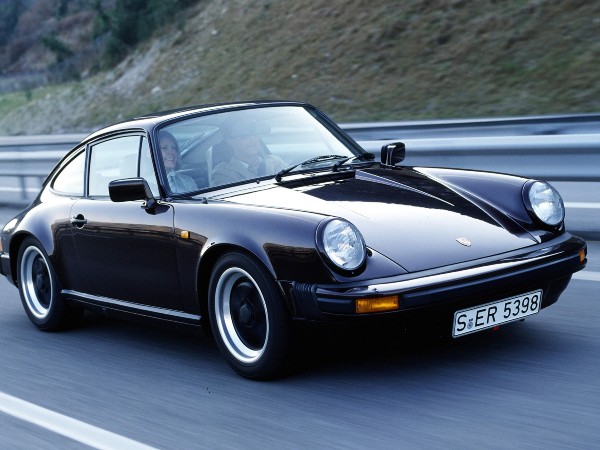
Pros
Classic air-cooled with greater reliability than earlier 911s
Strong driver engagement and mechanical feel
Carrera 3.2 and SC models known for durability
Iconic design with refined usability
Strong enthusiast demand and long-term desirability
Cons
Rising prices reduce accessibility
Rust and structural condition are critical concerns
Still lacks modern refinement and safety features
Maintenance costs can be high if poorly maintained
Quality of restoration varies widely
Perfect For
Buyers who want a true classic Porsche 911 experience — rich in character and heritage — but with greater reliability and usability than the earliest models, making it ideal for passionate enthusiasts who want to drive their classic rather than simply store it.
Porsche 911 G-Series (1974–1989) – Buyer-Focused Summary
The Porsche 911 G-Series represents a pivotal evolution of the classic 911, blending old-school character with meaningful improvements in usability, safety, and performance.
Introduced with impact bumpers and gradually refined over a 15-year run, the G-Series delivered stronger engines, improved reliability, better corrosion protection, and more livable ergonomics while retaining the unmistakable air-cooled soul.
For buyers weighing different 911 generations, the G-Series sits perfectly between raw vintage charm and modern usability — offering classic aesthetics and emotional engagement without the extreme fragility of earlier long-hood cars.
From an ownership perspective, the G-Series offers one of the most approachable entry points into classic 911 ownership.
Variants like the Carrera 3.2 and late SC models are especially respected for their robustness and usability, making them attractive to enthusiasts who want a classic driving experience without constant mechanical anxiety.
While values have risen significantly, these cars still offer a sense of authenticity and nostalgia that newer water-cooled generations cannot replicate.
However, the buying process requires careful attention to rust, originality, and mechanical condition — as restoration quality heavily influences both enjoyment and long-term value.
Porsche 911 (964) (1989-1994)

Pros
Perfect bridge between vintage and modern 911
Air-cooled character with improved drivability
Strong collector demand and rising values
Timeless styling and iconic presence
Engaging, mechanical driving feel
Cons
Expensive entry price for good examples
Requires specialist knowledge and maintenance
Early models had known engine sealing issues
Parts and restoration work can be costly
Comfort and refinement still limited by modern standards
Perfect For
Buyers who want a true air-cooled Porsche experience with enhanced usability — combining classic character, investment-grade desirability, and enough refinement to enjoy as a regular weekend or occasional driver.
Porsche 911 (964 Generation, 1989–1994) – Buyer-Focused Summary
The Porsche 964 marks one of the most important turning points in 911 history, bridging the gap between classic air-cooled simplicity and modern Porsche engineering.
While it retains the iconic silhouette and air-cooled engine character, the 964 introduced a host of significant upgrades: power steering, ABS, coil-spring suspension, improved aerodynamics, and modernized climate and electrical systems.
For buyers comparing 911 generations, the 964 offers a compelling mid-point — it still feels raw and mechanical, but with enough refinement to make regular driving far more realistic than earlier air-cooled models.
From a purchasing perspective, the 964 has become one of the most desirable modern classics in the 911 lineage. Its blend of timeless design, improved usability, and air-cooled purity has driven strong collector demand, especially for sought-after variants like the Carrera RS, Turbo, and manual coupes.
However, it is also a generation that requires careful due diligence. Early cars suffered from known issues such as cylinder head sealing problems and aging electronics, meaning condition, service history, and restoration quality are critical.
When properly sorted, the 964 delivers one of the most emotionally rewarding and aesthetically timeless 911 experiences available.
Porsche 911 (993) (1995-1998)
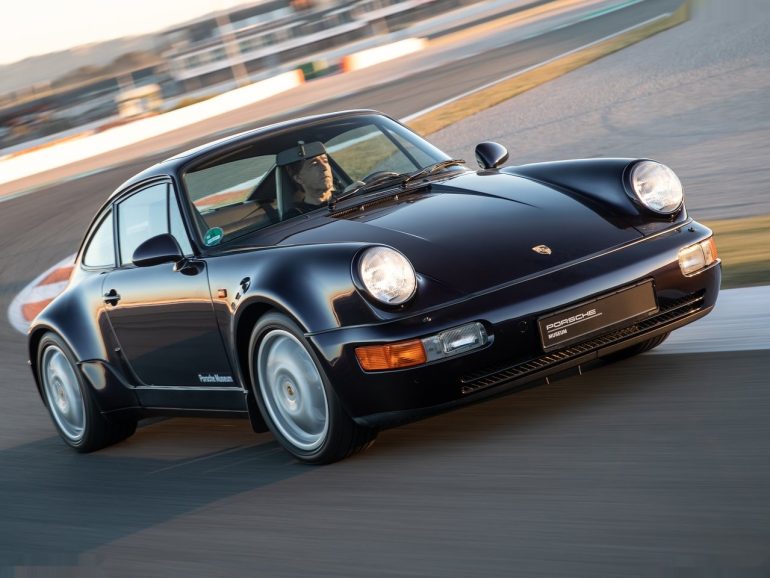
Pros
Most refined and usable air-cooled 911
Timeless styling and build quality
Strong collector appeal and long-term value
Improved reliability compared to earlier air-cooled models
Superb blend of classic feel and modern capability
Cons
High entry price and escalating values
Maintenance and parts costs reflect collector status
Limited modern comforts and technology
Quality variations between examples
Not ideal for buyers seeking a “cheap” 911 experience
Perfect For
Buyers who want the ultimate air-cooled 911 — combining classic character, increased usability, and strong investment potential — and are prepared to invest in preserving and properly maintaining a true modern classic.
Porsche 911 (993 Generation, 1995–1998) – Buyer-Focused Summary
The Porsche 993 is widely regarded as the pinnacle of the air-cooled 911 era, offering the most refined, developed, and usable interpretation of the classic formula.
While it retains the mechanical soul and acoustic character that define air-cooled Porsches, it benefits from a thoroughly modernized chassis, improved suspension geometry, better braking performance, and noticeably enhanced build quality over earlier generations.
For buyers comparing different 911 generations, the 993 occupies a unique position: it delivers the romance and authenticity of an air-cooled icon with a level of refinement and usability that makes real-world ownership more realistic than most earlier classics.
From a purchasing standpoint, the 993 has become one of the most sought-after classic 911s, prized for its timeless design, reliability (relative to older air-cooled models), and profound sense of occasion. Demand is especially strong for Carrera S, 4S, Turbo, and wide-body models, and prices reflect this enthusiasm.
However, entering 993 ownership requires careful financial and mechanical consideration. These cars now sit firmly in collector territory, with values heavily influenced by originality, condition, documentation, and specification.
A well-preserved 993 offers an unmatched blend of classic driving pleasure and long-term desirability — but it is not a casual or inexpensive purchase.
Porsche 911 (996) (1998-2005)
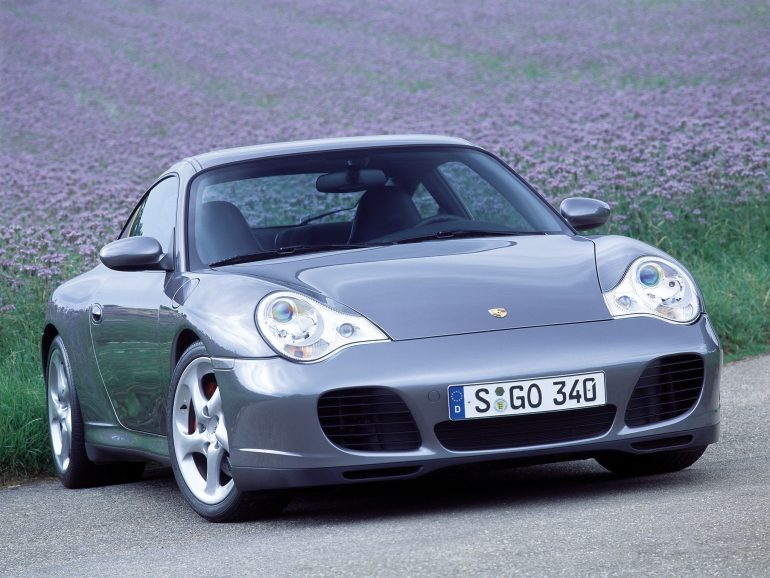
Pros
Most affordable and accessible 911 generation
Strong performance and lighter weight than later models
Modern comfort and usability
Good aftermarket support and parts availability
Excellent value when properly maintained
Cons
Engine issues (IMS, RMS, bore scoring) require vetting
Interior materials and styling are less refined modern gen
Some enthusiasts dislike the headlight design
Values vary significantly between sorted and neglected cars
Higher risk if buying without documented maintenance
Perfect For
Buyers seeking a budget-friendly way into 911 ownership — who value performance, modern usability, and driving purity — and are willing to perform proper due diligence to find a well-maintained, mechanically sound example.
Porsche 911 (996 Generation, 1999–2005) – Buyer-Focused Summary
The Porsche 996 represents one of the most significant shifts in 911 history — the move from air-cooled to water-cooled engines.
This change brought major improvements in performance, refinement, emissions, and everyday usability. The 996 also introduced an all-new body, modernized interior, improved heating and cooling, and a much more approachable driving experience compared to earlier air-cooled models.
For buyers comparing 911 generations, the 996 often stands out as the most affordable entry point into the 911 lineup, offering genuine Porsche performance and handling without the six-figure price tags attached to classic models.
However, the 996 also comes with well-known caveats, particularly surrounding engine reliability issues in certain models. IMS bearing failures, rear main seal leaks, cracked cylinder liners, and bore scoring can result in costly repairs if not addressed or documented.
That said, many examples have been properly sorted, updated, or rebuilt, making them far safer bets than their reputation suggests.
For budget-focused enthusiasts willing to do diligent research and inspection, a well-maintained 996 can deliver exceptional value and one of the purest “driver’s 911” experiences among modern models.
Porsche 911 (997) (2005-2013)
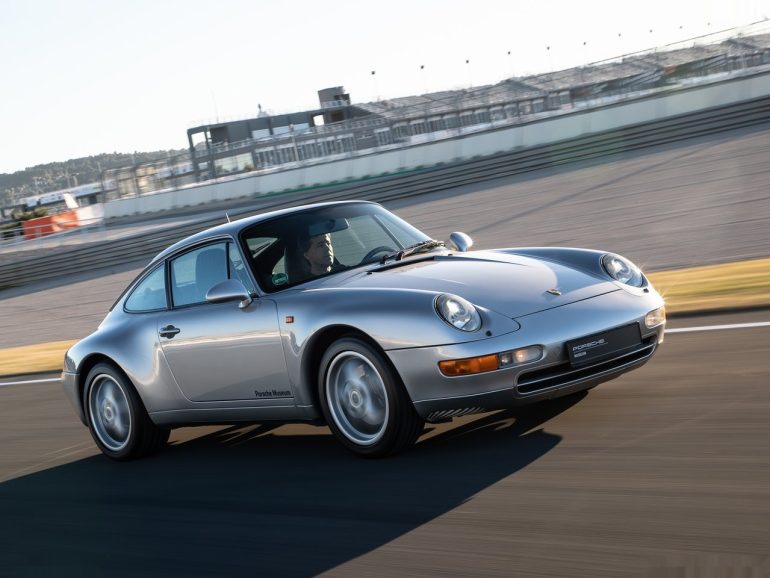
Pros
Timeless design with classic 911 proportions
Strong driving engagement and steering feel
Wide range of desirable variants
Improved reliability in 997.2 models
Excellent blend of old-school feel and modern refinement
Cons
Early 997.1 models still prone to IMS/bore scoring concerns
Rising prices reduce value advantage
High-performance variants command significant premiums
Maintenance costs still reflect sports car ownership
Some interior elements now show age
Perfect For
Buyers seeking a balanced 911 experience — blending classic Porsche character, modern comfort, and strong performance — without jumping into the ultra-digital feel of newer generations.
Porsche 911 (997 Generation, 2005–2013) – Buyer-Focused Summary
The Porsche 997 is widely considered the generation that perfected the balance between classic 911 character and modern performance.
With a return to round headlights, a vastly improved interior, and sharper driving dynamics, the 997 refined many of the 996’s shortcomings while preserving its approachable nature.
For buyers comparing 911 generations, the 997 stands out as one of the most complete all-around 911s — combining engaging steering feel, strong naturally aspirated engine options (especially in the 997.2), and modern drivability without becoming overly digital or insulated.
From a buying perspective, the 997 is highly desirable because it offers timeless styling, strong performance, and a broad spread of variants that cater to nearly every type of enthusiast.
Early 997.1 models still carry some IMS and bore scoring risks, while the later 997.2 models with updated MA1 engines brought improved reliability and direct fuel injection. Prices vary widely depending on spec and condition, but good examples continue to hold their value well.
For many enthusiasts, the 997 represents the perfect “do-it-all” 911 — equally competent as a daily driver, weekend thrill machine, or long-term keeper.
Porsche 911 (991) (2012-2019)
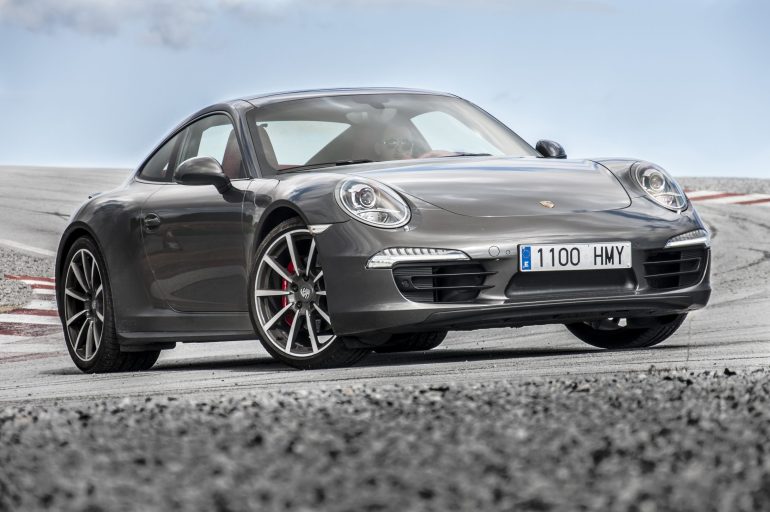
Pros
Highly refined and comfortable for daily use
Exceptional performance and stability
Excellent build quality and technology
Strong reliability across most variants
Broad range of trims and configurations
Cons
Less “raw” driving feel than earlier 911s
Rising complexity increases servicing costs
Turbo engines on many models reduce classic character
Higher purchase prices compared to older generations
Larger size reduces classic 911 intimacy
Perfect For
Buyers who want a modern, high-performance 911 that delivers everyday usability, cutting-edge comfort, and refined driving dynamics — while still retaining unmistakable Porsche character and prestige.
Porsche 911 (991 Generation, 2012–2019) – Buyer-Focused Summary
The Porsche 991 represents the point where the 911 fully evolved into a modern, globally capable sports car without losing its core identity.
With a wider track, longer wheelbase, and significantly improved chassis dynamics, the 991 feels more stable, refined, and confidence-inspiring than any 911 before it. For buyers comparing 911 generations, the 991 stands out for its comfort, build quality, and real-world usability.
It delivers serious performance with impressive daily drivability, offering features like advanced infotainment, adaptive suspension, and excellent refinement, making it one of the easiest 911 generations to live with.
However, this refinement comes at the cost of some rawness. Compared to earlier models, the 991 feels more polished and less mechanical, particularly in 991.2 variants that moved to turbocharged engines across the Carrera range.
While performance and reliability are excellent, purists may find it slightly detached in comparison to the 997 or air-cooled generations.
That said, for many buyers, the 991 is the most complete ownership package — blending luxury, technology, speed, and everyday comfort seamlessly. It is often considered the perfect entry point for buyers who want a modern sports car experience without stepping into the price levels of the newest 992 models.
Porsche 911 (992) (2020-Present)
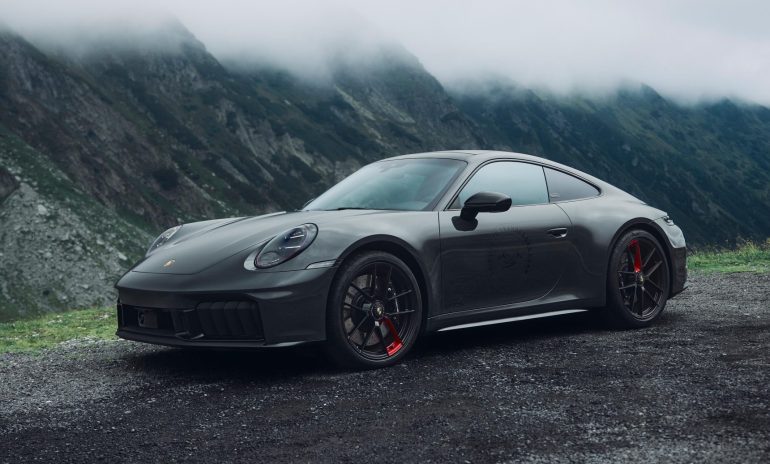
Pros
Most technologically advanced 911 ever produced
Exceptional performance and stability
Truly modern interior and infotainment
Extremely usable as a daily sports car
Wide range of high-performance variants
Cons
Very expensive to purchase and maintain
Feels more digital and insulated than older generations
Increased weight and size reduce classic feel
Complexity may affect long-term ownership costs
Less mechanical intimacy for purists
Perfect For
Buyers who want the pinnacle of modern Porsche engineering — a high-performance luxury sports car that blends extreme speed, comfort, and cutting-edge technology into a seamless daily-driving and long-term ownership experience.
Porsche 911 (992 Generation, 2020–Present) – Buyer-Focused Summary
The Porsche 992 represents the most advanced and capable evolution of the 911 to date, pushing the model firmly into the modern super-sports-car era.
With wider bodywork across the range, a dramatically improved interior, and a significant leap in technology, the 992 delivers immense performance with an effortless sense of composure.
For buyers comparing 911 generations, the 992 stands out as the ultimate all-rounder: faster, safer, and more refined than any 911 before it, while still preserving the unmistakable silhouette and DNA that define the model. It feels more planted, more predictable at the limit, and more luxurious in everyday use than its predecessors.
This sophistication, however, also means the 992 feels more digital and removed than earlier 911s.
While variants like the GT3 continue to satisfy purists, standard Carreras and Turbos prioritize speed, comfort, and usability over old-school mechanical interaction.
From a buyer’s standpoint, the 992 is ideal for those who want the best modern 911 experience — cutting-edge performance, advanced driver aids, and premium luxury — but it comes with higher costs, greater complexity, and less of the raw intimacy that characterizes earlier generations.
It is, unequivocally, the most complete and capable 911 ever made, but not necessarily the most emotionally visceral.

How to Use Our 911 Buyers Guides
Buying a Porsche 911 is not a single decision — it’s a journey through generations, engineering philosophies, and distinct driving personalities. Our 911 Buyer’s Guides are designed to help you approach that journey intelligently and confidently. Rather than rushing toward a specific car, we encourage you to begin with research: understanding the landscape of the 911 lineage, how each generation differs, and what those differences mean for performance, ownership, and long-term satisfaction.
Start by exploring our generation overviews. Each era of the 911 — from air-cooled classics to modern turbocharged marvels — delivers a uniquely different experience behind the wheel. Some generations prioritize purity and mechanical feel, others focus on comfort, speed, or technological refinement. Our guides help you understand what makes each generation special, what known issues or weaknesses exist, and what type of owner each one best suits. This step is critical in determining whether a specific generation truly aligns with your expectations, lifestyle, and budget before you move any further.
Once you’ve identified the generation that feels right, our guides shift from broad education to focused decision-making. This is where you begin narrowing your search by variant — Carrera vs Carrera S, GTS vs Turbo, GT3 vs Touring — and evaluating how different engines, transmissions, drivetrains, and option packages influence the driving experience. We help you understand which specifications meaningfully impact performance and value, and which ones are more cosmetic than essential.
From there, our buyer intelligence takes a practical turn. You’ll find guidance on current market values, pricing trends, and how to assess whether a specific 911 represents good value or potential risk. We break down what to look for in terms of service history, ownership background, originality, and condition — giving you the tools to spot red flags and avoid costly mistakes.
Finally, when you locate a specific 911 you’re considering, our inspection and authenticity sections become your final safeguard. These guides help you evaluate that individual car with a critical eye, ensuring you aren’t just buying a dream, but making a smart, informed investment. By following this research-first approach — understand, compare, refine, verify — you transform the buying process into a deliberate, confident decision instead of a leap of faith.
Buying A Porsche 911 FAQs
Here are all the questions we've received from readers considering a 911 for their driveway
Which Porsche 911 generation is the best to buy?
This is a website obsessed with Porsches and especially 911s so our answer is "whichever generation you want to buy is great". And we mean it. There’s no single “best” Porsche 911 generation that suits everyone — the ideal generation depends heavily on what you care most about (driver feel, budget, maintenance risk, modern comfort, or collectability). Here's how we think about each generation and the kind of buyer that would love it:
F-Series (1964–1973)
The original long-hood 911 is the purest expression of the model’s DNA: lightweight, mechanical, and completely analog. It delivers unmatched steering feel and classic Porsche charm, but it is truly a vintage experience — minimal safety systems, basic comfort, and constant attention required. Values are firmly in collector territory, and ownership is as much about preservation as enjoyment. This generation is best for collectors and purists who prioritize historical significance, originality, and classic driving connection over convenience or daily usability.
G-Series (1974–1989)
The G-Series introduced impact bumpers, improved safety, and key mechanical upgrades while retaining air-cooled identity. Later models like the Carrera 3.2 and SC blend classic style with greater reliability and real-world usability, making this generation a strong entry point into vintage 911 ownership. This generation is best for enthusiasts who want classic air-cooled character but with more usability and dependability than early long-hood cars.
964 (1989–1994)
The 964 bridges the classic and modern worlds — still air-cooled, but with power steering, ABS, modern suspension, and improved comfort. It retains raw mechanical character while becoming far more livable. It’s also highly collectible. Best for those buyers who want vintage authenticity but intend to drive the car regularly and enjoy modern convenience without losing air-cooled charm.
993 (1995–1998)
Often considered the ultimate air-cooled 911, the 993 delivers refinement, better handling, and improved reliability while retaining classic feel. It sits at the peak of desirability for collectors and discerning enthusiasts. Ideal for buyers seeking the best of air-cooled heritage with maximum usability and long-term value appreciation.
996 (1999–2005)
The first water-cooled 911 marked a major shift. Performance improved dramatically, but early engines came with reliability concerns. Today, it is the most affordable entry point into 911 ownership and delivers strong driving thrills for the price. Great for value-focused buyers who want the 911 driving experience and are willing to prioritize condition, maintenance history, and smart shopping.
997 (2005–2013)
Often seen as the “sweet spot” modern 911, the 997 blends classic proportions with improved interior quality and modern performance. Later 997.2 models also resolved major reliability concerns. Best for buyers seeking an engaging, well-balanced 911 that still feels connected and mechanical but is comfortable enough for daily use.
991 (2012–2019)
A major leap in chassis design and refinement, the 991 introduced wider platforms, advanced tech, and stronger everyday usability. Slightly more polished and less raw, it excels as a daily-capable sports car. Ideal generation for drivers who want a modern, luxurious 911 that can be driven daily while still delivering high performance and strong reliability.
992 (2020–Present)
The most advanced and performance-focused 911 yet, the 992 blends cutting-edge technology with huge performance gains and luxury. It feels more digital, but also more capable than ever. The latest generation is for buyers who want maximum performance, modern tech, and a premium ownership experience with minimal compromise.
As you can tell, the “best” Porsche 911 generation depends entirely on what you want from ownership. Each generation tells a different story — from mechanical purity to modern performance precision. Whether your priority is nostalgia, daily usability, investment potential, or pure driving engagement, there is a 911 generation that aligns perfectly with your goals.
Gun to our heads, if you’re looking for a balanced sweet spot that blends performance, usability, reliability, and long-term value, for many buyers the generation I’d most recommend is the 991 (2012–2019). The 991 strikes a rare balance: it offers modern performance and comforting refinement — enough to handle daily driving or long trips — while still preserving strong connection to 911 DNA. It’s comfortable enough for everyday use, yet capable enough for spirited driving. Features such as improved suspension geometry, refined interiors, and advanced systems make ownership far more manageable than in earlier air-cooled or very old models. For someone entering or upgrading within the 911 world without jumping into “collector-status” pricing, it represents one of the most complete packages.
Is a used Porsche 911 reliable and is it a good daily driver?
A used Porsche 911 can be reliable and practical enough for regular use — but much depends on the generation, how well it was maintained, and how realistic your expectations are. Below is a quick breakdown by generation, plus a broader view on what to expect from 911 ownership overall.
911 Generations: Reliability & Daily Use Perspective
F-Series (1964–1973) — These are vintage machines: beautiful, raw, and classic. While many are painstakingly maintained and can run reliably, they require constant attention, mechanical sympathy, and potentially frequent upkeep. For daily use, they tend to be too brittle and demanding — better suited as occasional drives or collector cars.
G-Series (1974–1989) — More robust than the earliest 911s, with some improved engineering and sturdier components. Still air-cooled and simple by modern standards, many G-Series cars remain roadworthy for daily use if well cared for. That said, maintenance remains hands-on: oil changes, cooling, aging seals, and wear items require regular checks. For commuting or regular use, they’re manageable — but not carefree.
964 (1989–1994) — Often considered one of the most usable vintage 911s. With improvements like power steering, better brakes, and improved comfort, a well-maintained 964 can serve as a weekend driver and, in some climates and lifestyles, even a weekend-plus car. Reliability is generally good if the car has been looked after, though parts and maintenance costs remain higher than modern cars.
993 (1995–1998) — Widely regarded as the strongest “classic 911 you can still drive regularly” candidate. It claims the most refined air-cooled engineering, decent build quality, and comparatively fewer quirks than older generations. Many owners treat 993s as more than weekend toys — with proper maintenance, they’re arguably the best compromise between classic 911 character and regular usability.
996 (1999–2005) — As the first water-cooled generation, the 996 brought major advances in reliability and comfort. When properly sorted (especially avoiding poorly maintained early engines), a 996 can be a compelling daily driver or long-distance companion. That said, known engine issues on some variants require careful vetting when buying — but a well-maintained 996 is far easier to live with than many older 911s.
997 (2005–2013) — Among the most balanced 911 generations for real-world usability. Improved interiors, better materials, updated electronics, and more refined driving dynamics make 997s among the easiest 911s to live with on a regular basis. Later 997.2 models further improved engine reliability. For daily driving, commuting, and road trips — 997 is tough to beat.
991 (2012–2019) — Designed for modern ownership. With wide-body stability, modern suspension, updated electronics, creature comforts, and better build quality, the 991 is arguably the most usable 911 for everyday driving among all generations. Many owners daily-drive their 991s with few issues. Reliability tends to be good when regular maintenance is respected, though complexity means some maintenance items cost more than older cars.
992 (2020–Present) — As the latest generation, the 992 benefits from the most advanced engineering, safety, comfort, and reliability features. With modern materials, improved engines, refined ride comfort, and advanced driver aids, it's arguably the most practical “supercar-level performance — daily drivability” 911 you can own right now. That said, maintenance and insurance costs remain high.
Broad 911 Ownership Reality — Trade-offs, Strengths & What to Expect
Maintenance is higher than average: Regular oil changes, brake and tire wear, and scheduled servicing are essential. Older 911s especially require more frequent mechanical attention, but even modern 911s benefit from diligent maintenance.
Reliability greatly depends on history and use: A well-cared-for 911 with documented service history often performs surprisingly well, even in older generations. By contrast, a low-mile or “barn find” 911 with unknown history can become costly.
Comfort and usability evolved over time: Early 911s are charming but raw; later generations (997, 991, 992) offer modern comfort, safety, and practicality. As a daily driver — especially in mixed traffic or modern commuting — newer 911s make much more sense.
Realistic expectations are key: Even the most reliable 911 still demands respect. Regular upkeep and preventative care are part of the ownership commitment. Treat it as a performance car — not a commuter appliance — and you’ll have far fewer surprises.
A used Porsche 911 can be reliable and enjoyable for daily driving, but only if you buy smart, maintain carefully, and match the generation to your intended use. For collectors and classic enthusiasts, the 993 offers the most balanced classic-era ownership experience. For performance, usability, and peace of mind, the 997 or 991 are among the best bets. And if you want the ultimate modern 911 experience — with all the comforts and engineering refinements — the 992 delivers performance, practicality, and prestige all in one package.
Is a Porsche 911 expensive to maintain?
A used Porsche 911 can be expensive to maintain — especially compared with an ordinary commuter car — but “expensive” is a relative term. Whether it becomes a burden or a manageable investment often depends on the generation, maintenance history, and how the car is used. Below, I break down the maintenance outlook for different 911 generations, then offer a broader view of what ownership tends to cost and what to expect.
Maintenance Reality by Generation
Air-cooled Classics (F-Series, G-Series, 964, 993)
Air-cooled 911s carry a charm and mechanical simplicity, but with that comes age-related maintenance needs. Older engines, outdated systems, and decades of potential wear mean these cars often demand more attention: oil leaks, seals, bushings, rust prevention, and regular mechanical upkeep. As one owner of a 993 recently shared, they spent “$10–25 k over 3–4 years” just to keep the car in top shape.
Because these cars are often in “collector–class” condition, maintenance can be unpredictable and pricey. When things go wrong — engine seals, suspension mounts, or rust — costs rise quickly. Even routine maintenance tends to be more labor-intensive because parts may be older, harder to source, and require specialist work.
Air-cooled 911s can be rewarding and deeply satisfying — but you must be ready for higher maintenance demands, unpredictable costs, and the likelihood of regular upkeep. Great for enthusiasts and collectors, less ideal for casual or budget-conscious owners.
Early Water-Cooled (996, early 997 / 997.1)
The shift from air-cooled to water-cooled starting in the 996 brought cooler-running, more modern engines and improved everyday usability — but also introduced a new set of maintenance considerations. The 996 is often described as the “affordable entry point” to 911 ownership, but buyers must remain vigilant.
Known trouble spots — especially on early engines — include issues such as IMS bearing failures, rear main seal leaks, and other internal engine risks. When such problems strike, repair costs can be substantial. As one recent post described, doing a “100k-mile refresh” on a 996 (engine/seals/suspension) ran up a $6,000 bill.
That said, everyday wear items (tires, brakes, fluids, suspension bushings) are fairly typical for a sports car of this age. With good maintenance and proper history, a 996 (or 997.1) can be reasonably predictable in upkeep — but only if you're buying wisely and ready for potential big-ticket repairs.
Later Water-Cooled (997.2, 991, 992, and Later 997)
These generations tend to offer the most “ownable 911” experience from a maintenance perspective. With improved engineering, better materials, and lessons learned from prior generations, they generally require less frantic upkeep — assuming normal use and responsible care. For example, one recent survey suggests the average annual repair cost across 911 owners is around US $1,072 per year, which is reasonable for a performance car. Owners of a 997 report that — with regular maintenance and no major issues — annual upkeep can fall in the range of £1,500–£2,000 per year (for Europe), including routine maintenance and expectable wear items (tires, brake pads, fluids, etc.) but excluding major repairs.
Because these cars are more modern in design, parts availability is good, and repair work is often more straightforward — which helps keep maintenance manageable compared to vintage 911s. Later water-cooled 911s generally strike the best balance between performance, usability, and maintenance predictability. If you want a daily driver or long-term ownership with fewer surprises, these generations often make the most sense.
A Porsche 911 is not a “cheap car” — it never was meant to be. But it can be reasonable to own and maintain, provided you’re thoughtful about generation choice, condition at purchase, and ongoing upkeep. If you want maximum charm and collectability — and you’re comfortable with extra maintenance — an air-cooled or early 911 can be very rewarding, but be prepared for unpredictability. If you want balance: performance, reliability, and everyday usability — later water-cooled generations (997.2, 991, 992) offer strong value and manageable maintenance costs. If you decide to own a 911: budget for wear items, follow maintenance intervals, treat fluids and suspension carefully, and always prioritize condition and service history over cheap up-front price.
Which 911 generation and variants hold their value best?
Here’s a breakdown of which Porsche 911 generations and variants tend to hold their value best — and under what circumstances. I group them by strength type (collector appeal, value retention, performance-variant premium), to help you match market behavior to your buying goals.
Generations & Variants That Hold Value Strongly
Porsche 911 993 (1995–1998) — The “Last of the Air-Cooled” Flagbearer
The 993 generation is widely viewed as the crown jewel of air-cooled 911s. It combines classic 911 character with modern-era refinements, making it the most desirable “classic 911” in today’s market. Because it’s the final air-cooled generation, demand among collectors and enthusiasts remains robust, especially for clean, well-maintained examples. Even non-Turbo or base 993 Carreras tend to command strong prices compared to many older air-cooled 911s. For buyers seeking long-term value retention, originality, and classic 911 feel with decent usability — the 993 remains arguably the safest “classic era” bet.
Best for: Collectors, air-cooled purists, long-term investment buyers who want a 911 with strong historical significance and rising demand.
Late-Model Water-Cooled & Transitional Generations (e.g. 997, 991, and modern 992s) — Balanced Value + Performance Appeal
The 997 generation continues to be popular because it blends many of the classic 911 traits with modern usability. Later 997.2 cars especially benefit from improved engines and fewer historical issues, which helps maintain value. Among the 991 generation — and as the 992 gains ground — the broader popularity of water-cooled 911s, improved reliability, modern amenities and performance keeps demand healthy. In fact, recent data suggests 911 coupes retain a high proportion of their value over time, with some estimates citing value retention of around 80–85% after five years. For drivers who want a car that’s usable, modern, and still carries the “911” badge prestige — these water-cooled generations represent a sweet spot of value-to-usability balance.
Best for: Buyers who want a 911 that’s practical enough for regular use, with good resale stability and less worry about older 911 quirks.
Performance & Special-Edition Variants (Turbo, GT3, GTS, Limited Editions, Air-Cooled Turbos, etc.) — The Most Collector-Resilient 911s
Performance-focused variants tend to hold value best, regardless of generation — whether it’s a 993 Turbo, a 997 GT3 RS, or a later 991/992 top-spec model. Their rarity, performance credentials, and desirability help sustain demand even when base models depreciate. Among air-cooled 911s, turbocharged or wide-body models — especially well-kept examples — remain some of the most expensive and collectible. For many owners, these variants offer the best “value holding + performance enjoyment” balance — strong driver appeal plus greater likelihood of appreciation or stable resale value.
Best for: Enthusiast buyers and collectors wanting maximum performance, exclusivity, and long-term desirability — especially if they plan to keep rather than daily-drive.
What Makes Value Retention Fragile — And What to Watch Out For
Early generations with heavy wear or modifications: Older 911s (especially pre-964 or early water-cooled) can have unpredictable maintenance histories; poor upkeep or modifications erode value quickly.
Low-spec or high-mileage base models: Even among popular generations, valueless trim or high miles may lead to steeper depreciation compared to well-maintained, desirable trims.
Over-spec’d maintenance or performance cars used as daily drivers: High-performance variants offer strong value when cared for, but frequent use, neglect, or deferred maintenance can reduce their long-term worth — especially if originality suffers.
Broad Takeaway: 911 Value Retention Patterns
The strongest overall value retention tends to cluster around late air-cooled 911s (especially 993), well-maintained 997/991 water-cooled generations, and rare, high-performance variants. If you buy well — clean history, desirable spec or rarity, proper maintenance — a 911 can hold much of its value over time, often outperforming typical depreciating cars by a wide margin. Indeed, the 911 is often cited as one of the best value-holding performance cars on the market today. In many cases, your choice between “daily-usable 911” and “collector 911” will determine value retention more than the generation itself. Maintenance, originality, and how the car is used matter as much — or more — than model year.
Should I avoid 911 generations that have IMS issues?
You don’t necessarily need to avoid 911 generations with known IMS issues — but you should approach them with caution and informed diligence. Whether it’s a risky choice or a reasonable gamble depends entirely on how the car has been maintained and what kind of condition-check you perform. Here’s a breakdown of the trade-offs and what to watch out for:
What Is the “IMS Issue” and Which 911s Are Affected
The “IMS issue” refers to problems with the intermediate shaft bearing (IMS) used in many water-cooled 911 (and related Boxster/Cayman) engines built between about 1997 and 2008. These include the common 996 generation (1999–2005) and many early 997s (roughly 2005–2008). The core of the problem: on many of these engines, the original IMS bearing was a sealed ball bearing that — over time — could lose lubrication or wear out, leading to catastrophic engine failure if it fails, because that bearing supports the shaft that drives the camshafts. The most vulnerable subset tends to be the years roughly 2000–2005 (single-row sealed bearings), though engines before/after that window are not completely immune depending on build and service history.
Why You Might Still Consider a 911 With IMS Risk (If You Know What to Do)
It can be prevented. Many owners choose to retrofit or upgrade the IMS bearing to a more robust aftermarket solution (or have documented that it’s been done), which greatly reduces — though never totally eliminates — the risk.
Value vs reward can remain attractive. Because these generations (996, early 997) tend to be more affordable than newer or more collectible 911s, you may get a “real 911 driving experience” at a lower entry price — provided the engine and maintenance is well sorted.
Not all examples fail. While IMS failures are serious, they are not guaranteed. Some 911s built in the problem years have run fine for decades, especially if maintained properly — frequent oil changes, attentive care, and preventive maintenance help.
So, if you find a well-kept example with clear proof of maintenance (especially IMS bearing retrofit or replacement), it’s not automatically a “don’t buy.” It becomes a considered purchase, where you weigh risk vs reward, much like buying a classic car of any type.
Why It Is Often Advisable to Avoid or Be Extremely Cautious
IMs failure can be catastrophic. If the bearing goes bad, you could face a full engine rebuild or replacement — a very expensive, labor-intensive repair.
Uncertainty if maintenance history is unclear. If the car lacks thorough documentation — unknown owner history, no record of bearing upgrade or oil analysis, intermittent care — the risk goes up significantly. Without transparency, you may be buying a ticking time bomb.
Opportunity cost. With newer generations (997.2, 991, 992) there are plenty of 911s built after the IMS-issue era — offering modern performance, reliability, and fewer headaches. For a similar or slightly higher price, you may avoid the risk altogether.
My Recommendation: When to Avoid (or Approach Carefully) IMS-Era 911s
You should strongly avoid or walk away from 996 / early 997 911s if there’s no proof the IMS bearing was upgraded or replaced. Also walk away if the engine has high mileage and questionable maintenance history (oil changes, major service intervals, records missing). Other signs that are warnings to me include if a car shows signs of neglect — oil leaks, neglected service items, or nothing more than “hope and fingers crossed.”
You might consider one (with eyes wide open) if there is clear documentation showing IMS bearing retrofit/replacement (or a newer engine swap), regular service history, and good overall maintenance. Ultimately, price matters too and when the price reflects the risk — i.e. significantly discounted vs. safer, newer 911s — giving you value for the trade-off. If you pull the trigger, make sure you're comfortable with the possibility of future maintenance, and budget accordingly (e.g. oil changes more frequent, occasional preventive engine inspections).
What mileage is too high for a Porsche 911?
Under 40,000 miles – Low mileage / collector territory
This is where cars often carry premium pricing. These examples are attractive for collectors and resale value, especially on air-cooled or desirable variants. However, ultra-low mileage can sometimes come with its own problems: dried seals, underuse, and long periods of storage. Lack of driving isn’t always a positive for a car designed to be used.
Best for: Collectors, investment buyers, or those prioritizing originality and resale value.
40,000 – 80,000 miles – Prime ownership range
This is often the sweet spot for most buyers. The car has been driven enough to be mechanically exercised, but not so much that major components are likely at end-of-life (assuming proper maintenance). Many excellent daily-driver 911s fall in this range.
Best for: Enthusiasts who want a well-used but still strong car for regular driving.
80,000 – 130,000 miles – High mileage, but not a deal-breaker
This is where buyers need to shift mindset from “how low are the miles?” to “how well was it cared for?” At this point, suspension components, clutches, cooling systems, and seals may need refreshing or may already have been addressed. For modern 911s (997+, especially 991), this mileage can still represent a very good purchase if the car has strong service history.
Best for: Value-focused buyers comfortable budgeting for future maintenance.
130,000+ miles – Ownership commitment territory
This is not automatically “too high,” but it becomes a more specialized purchase. You should assume maintenance needs will continue and potentially increase. This mileage is most suitable for buyers who plan to drive the car long-term and don’t care about maximum resale value.
Best for: Experienced buyers who understand 911 ownership costs and plan extended ownership.
Mileage vs Generation — How It Matters Differently
Air-cooled 911s (pre-1999): Mileage matters less than originality, condition, and documentation. Some cars with 150k+ miles are excellent if rebuilt or maintained correctly.
996 / early 997: Mileage combined with poor maintenance history can signal real risk. Always check for engine health (borescope, oil analysis).
997.2 / 991 / 992: Modern generations are far more tolerant of higher mileage if maintained properly. A well-kept 991 with 100k miles is often still very reliable.
What Really Determines Risk (More Than Mileage)
If you're evaluating a 911, things like a full service history and regular maintenance intervals matters way more than the odometer reading. Things like evidence of major services (clutch, suspension refresh, cooling parts) and owner care and driving style are things to dive into. Look at where the car is stored and what the pre-purchase inspection results say. A 911 driven regularly and serviced properly is usually healthier than one that sat untouched for long periods.
So... What Mileage Should You Personally Avoid?
Here’s a practical guideline:
If you're a first-time 911 buyer → ideally stay under 90,000 miles unless documentation is exceptional
If you're an enthusiast buying for value and long-term use → mileage matters less than care and condition
If you're a collector or resale-focused buyer → keep mileage under 50,000 where possible
If you want a daily driver → 60k–110k miles can be perfectly appropriate with good history
Is a Porsche 911 a good first Porsche?
Yes — a Porsche 911 can be an excellent first Porsche, but whether it is the right first Porsche depends on your expectations, budget, and what you want out of ownership. The 911 is not just Porsche’s flagship; it is also one of the most rewarding sports cars to own, offering performance, prestige, daily usability, and long-term desirability in a way few other cars can match.
For many first-time Porsche buyers, the 911 represents the full Porsche experience from day one. You get the iconic shape, rear-engine character, high-quality engineering, and a car that feels special every time you drive it. Modern generations in particular (997, 991, 992) are remarkably friendly to live with — comfortable, reliable, safe, and refined enough for daily use. If you’re financially prepared for the costs of ownership and value both driving enjoyment and brand legacy, a 911 is a fantastic introduction to the marque.
That said, the 911 is not always the most forgiving entry point. It sits at the top of the Porsche lineup in both performance and cost, and ownership comes with higher insurance, maintenance, and repair expenses than Boxsters or Caymans. Older generations require more mechanical understanding and attentive care, while newer models come with advanced systems and higher service pricing. For buyers who want a gentler learning curve — or are unsure how much they’ll actually drive the car — starting with a Boxster or Cayman may feel less intimidating while still delivering quintessential Porsche dynamics.
Who the 911 Is Perfect As a First Porsche For
Buyers who want the iconic Porsche experience from the start
Drivers planning to use the car regularly or as a long-term keeper
Enthusiasts who value performance, heritage, and brand prestige
Those with a realistic maintenance budget and ownership expectations
Who Might Consider Starting Elsewhere
Buyers unfamiliar with sports car ownership costs
Drivers seeking a lower-risk, lower-cost entry into Porsche ownership
Those prioritizing agility over straight-line performance
People unsure whether Porsche ownership fits their lifestyle
Is now a good time to buy a Porsche 911?
Stupid question. Of course it is. It always is. Ok fine, we will answer it for real. The truth is that it depends on what you want out of it. Here's how we think about it.
What makes now a good time
Strong long-term value retention. The 911 continues to outperform most other cars when it comes to depreciation. Recent data shows the 911 coupe retains about 83% of its value after five years, among the highest resale-value retention numbers in the automotive world. Because of that, buying a 911 today often means you’re not losing as much on resale compared with most sports cars — which historically lose significantly more value over time.
Used-car market dynamics favor buyers. With pressure on new-car prices (including recent price hikes for new 911s) more people are looking to the used market — which helps keep supply healthy. For well-sorted used 911s, that means there are more choices, and with patience you may find a desirable car at a relatively reasonable price.
Broad appeal and demand remain strong. Despite fluctuations in wider car-market value, the 911 remains one of the few sports cars with broad, sustained demand for used examples — in part because of its reputation, engineering, and versatility as both driver’s car and long-term keeper.
In short: if you pick carefully, a 911 bought now is more likely to hold value over time than most sports cars — which reduces long-term ownership risk and improves the investment-like case for buying.
What to be cautious about
Prices are higher than “bargain era.” Because of strong demand and recent increases in new 911 pricing, used 911s are overall more expensive now than 10–15 years ago. As a buyer, that means fewer “steal” opportunities.
Recent models (especially base 992/992-era Carreras) have begun to show softness in value. For instance, the base 992 Carrera has reportedly seen a small but noticeable drop in prices recently — the first broader dip after a long period of stability. That suggests value gains are not guaranteed — especially for base or low-spec cars.
More competition from other buyers: As demand for used 911s stays high, many of the best-kept, desirable cars get snapped up quickly. That means you may have to be patient, prepared to inspect thoroughly, and ready to act fast when a good example appears.
What kind of buyer benefits most from buying now
Someone looking for long-term value + driving fun: If you want a car that’s likely to hold value and still delivers strong performance and usability — a well-chosen 911 is among the smartest “investment + fun” cars in this market.
Someone not price-sensitive but value-conscious: If you’re okay paying a bit more up front, but care about long-term depreciation, resale value, and durability — now’s a reasonable window.
Someone willing to inspect carefully and be selective: Because values are elevated, a shallowly spec’d or poorly maintained 911 is a poor deal. The best buyers now are those willing to dig into history, verify condition, and pick cars with desirable specs, documentation, and maintenance records.
Which 911 generations and variants are best for weekend driving fun?
If you’re thinking about a Porsche 911 and want one that’s especially great for weekend-driving fun — winding roads, spirited back-road runs, sunny day cruising, maybe even occasional track days — some generations and variants stand out more than others. Different 911s bring very different personalities, so the “best for fun” depends on what kind of driving makes you happiest. Below are the 911 generations/variants that tend to excel at weekend-driving fun — and why.
911 Generations & Variants Best for Weekend Driving Fun
Porsche 911 993 (1995–1998) — The Air-Cooled Sweet Spot
The 993 is widely regarded as the most refined “classic” 911 — the last of the air-cooled line and perhaps the most emotionally rich 911 chassis Porsche built. It balances vintage analogue feel with surprisingly polished handling for its age. The 993’s multi-link rear suspension, improved build quality, and air-cooled flat-six soundtrack deliver a driving experience that feels alive, mechanical, and deeply connected. Many enthusiasts call it the 911 that “does it all”: classic character, beautiful sound, and a chassis still capable enough to enjoy on twisty roads or mountain passes. Best for purists who want a true 911 soul, relish classic sound and mechanical connection, and don’t mind a slightly more raw, more involved ownership experience.
Porsche 911 964 (1989–1994) — Classic Feel Meets Usability
For someone who wants a “vintage-era 911” but with more usable comfort than pre-’70s long-hood cars, the 964 sits in a sweet middle ground. With improved suspension, optional all-wheel drive (on Carrera 4 models), and relatively modern chassis feel for the era, the 964 remains a favorite among drivers who want weekend fun without being too precious about mileage or comfort. It’s often praised as one of the most agreeable “classic generation” 911s to actually drive, especially on scenic drives or back-roads. Best for drivers wanting classic 911 character with a more manageable ride and everyday usability than older air-cooled cars.
Porsche 911 997 (2005–2013), especially 997.2 / GTS / Sport Variants — Balanced Modern-Classic Fun
The 997 generation — particularly the later 997.2 versions and performance-oriented trims — is often called the “sweet spot” 911 for many buyers. It blends modern ergonomics and reliability with engaging driving feel, low-end usability, and enough power to be thrilling. The 997’s combination of classic 911 proportions with more civilized daily manners makes it a great candidate for weekend fun that doesn’t require giving up comfort. Many owners find it especially rewarding for spirited drives or occasional track use thanks to its mix of rawness and refinement. Best for drivers who want a modern-outfitted 911 that’s lively, dependable, and fun — ideal for spirited weekend drives and occasional long trips.
Porsche 911 991 (2012–2019) and Early 992 (2019–Present) — Polished, Fast and Versatile Thrill Machines
For those who want weekend fun without sacrificing comfort, refinement, or modern amenities, the 991 (and early 992) generations deliver. These 911s are powerful, stable, fast, and easy to drive hard — but they’re also usable for everyday roads or long-distance cruising. Their improved suspension, better ergonomics, and modern braking/traction help make them not just fast, but forgiving and confidence-inspiring. For many, this generation is about blending supercar-like capability with sports-car soul. Best for drivers who want a high-performance, capable 911 for fun drives — but still want comfort, modern amenities, and versatility.
My Take — The Best 911s for Weekend Driving Fun
If I were buying a 911 today just for pure driving enjoyment — the kind where I spend Sundays on scenic drives, twisty roads, maybe a track day now and then — I’d be looking first at:
A 993 (if I want that classic air-cooled magic)
A 997.2 GTS / Sport (for balance of power, feel, and reliability)
A 991 or early 992 (for modern performance and refinement, with maximum usability)
Each of those delivers a slightly different flavor of what “fun” means — pure nostalgia, balanced excitement, or modern thrills — but all have one thing in common: they keep the 911 spirit alive while giving a driver real excitement behind the wheel.
What’s the best 911 generation and variants for the money?
If you’re trying to figure out which Porsche 911 generation + variant gives you the best “bang for the dollar”, there are a handful of sweet-spot combinations that tend to hit the balance of performance, reliability, usability, and resale value. What “best for the money” means will depend on your budget and what you want out of the car — but the picks below are widely regarded as among the strongest in terms of value-to-enjoyment ratio today.
“Best 911 for the Money” Picks
Porsche 911 997.2 (2009–2012) — Carrera / Carrera S / 4S
The 997.2 is often viewed as the sweet spot for 911 lovers who want classic 911 character with fewer of the reliability worries associated with earlier 996/997-1 cars. The 997.2 uses the updated “MA1” flat-six engine that avoids most of the infamous IMS / bearing / bore-scoring problems of older water-cooled engines. For what you get — rear-engine balance, acceptable weight, good performance from naturally aspirated engines, modest complexity compared with modern 911s — the entry price tends to offer excellent value. One enthusiast described the 997.2 (under reasonable maintenance) as “rock-solid daily / weekend 911.”
Why it’s “best value”: decent daily usability, fairly modest maintenance costs (compared with older or ultra-modern cars), and price levels that often undercut newer 911s — making performance + status more accessible.
Porsche 911 991.1 / 991.2 (2012–2019) — Carrera / Carrera S / GTS
If you can spend a bit more, then the 991 generation becomes hard to beat for overall value. Reliability on these mid-generation 911s is strong (many reviewers call them among the most dependable used 911s on the market). The 991 pairs modern-day comfort and usability — a roomy interior (for a 911), better ride quality, modern electronics and safety — with impressive performance. For many, this generation is the best “do-it-all” 911: capable daily driver, weekend fun car, and long-term keeper in one.
Why it’s “best value”: you get almost everything you want from a 911 — performance, prestige, comfort, reliability, and relative ease of ownership — without paying super-collectible premiums.
My Take: Which 911 I’d Buy Today for Value + Enjoyment
If I were in the market right now and money mattered — but I still want that “real 911” experience — I’d focus on either:
A 997.2 Carrera or Carrera S/4S — if I want a more “analog-era” 911 that’s still reasonable to maintain.
A 991.1 / 991.2 Carrera S (or GTS if budget allows) — if I want the most complete blend of comfort, performance, usability, and long-term reliability.
Between the two, the 991 tends to feel more “future-proof” (modern amenities, better daily usability), while the 997.2 generally represents the best value-per-dollar if you accept slightly older tech but pay significantly less up front.


